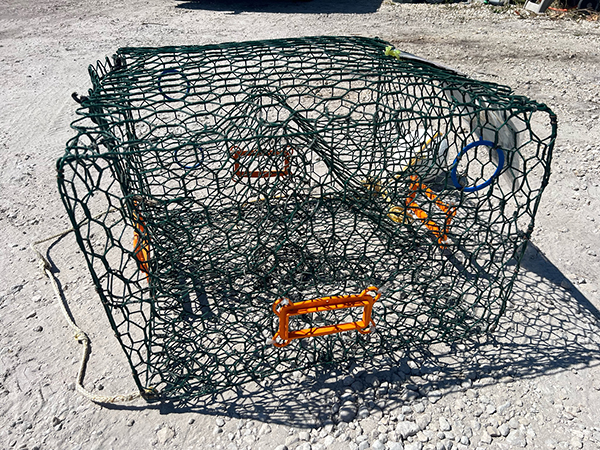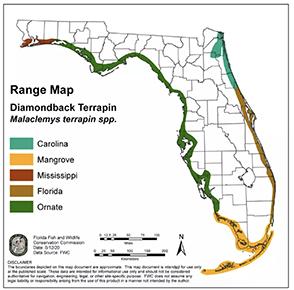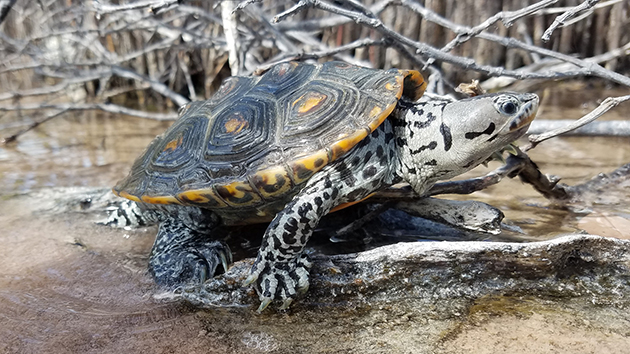Drowning in crab traps is a major threat to diamondback terrapins (Malaclemys terrapin), and as of March 1, all recreational crab traps in Florida are required to have specialized bycatch reduction devices (BRDs) installed to prevent the turtles from entering.

The 2-by-6-inch BRDs can be seen in orange
The new rule, issued by the Florida Fish and Wildlife Conservation Commission, is one SCCF has been advocating for since 2007 through the Diamondback Terrapin Working Group, a national collaboration of academics, scientists, and government officials who want to conserve the unique turtle species.
“Some crab pots have been found with over 50 dead terrapins in them. Not only do active traps drown terrapins, but ‘ghost traps’ — abandoned or lost traps — continue to catch and drown terrapins until they break apart years later,” said SCCF Wildlife and Habitat Management Director Chris Lechowicz. “BRDs can prevent a significant number of terrapins from incidental drowning, mostly adult egg-producing females and adult males.”
Lechowicz said that although the new FWC rule is a step forward, it will take a lot of education to ensure people are aware of the new regulation, as well as law enforcement intervention when necessary.
On the first day the rule was passed, a crab pot was found in Lee County with 9 dead terrapins and five live terrapins, one of which was brought to a wildlife rehab facility.
 “Diamondback terrapins are a truly unique species of turtle as the only turtle in the western hemisphere to live exclusively in brackish water,” Lechowicz said, adding that Southwest Florida is home to two of the seven subspecies — the mangrove diamondback terrapin (Malaclemys terrapin rhizophorarum) and ornate diamondback terrapin (Malaclemys terrapin macrospilota).
“Diamondback terrapins are a truly unique species of turtle as the only turtle in the western hemisphere to live exclusively in brackish water,” Lechowicz said, adding that Southwest Florida is home to two of the seven subspecies — the mangrove diamondback terrapin (Malaclemys terrapin rhizophorarum) and ornate diamondback terrapin (Malaclemys terrapin macrospilota).
SCCF began research on diamondback terrapins in Lee County in 2012, becoming the first team in the area to deploy satellite transmitters on pregnant females to identify important nesting areas.

“A lot of knowledge about this species has come out of our research, and we will continue to use our data to push for mandatory BRDs on commercial crab traps, which outnumber recreational crab traps,” Lechowicz said. If commercial BRDs are implemented, Charlotte Harbor and Pine Island Sound will be among the areas that require them.
In addition to bycatch, threats to diamondback terrapins include illegal collection, loss of nesting and foraging habitat such as seagrass beds and saltmarshes, and poor water quality.

Comments are closed